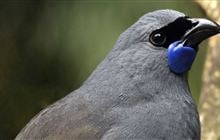Battle for our Birds 2017 underway
Archived content: This media release was accurate on the date of publication.
Introduction
This year’s Battle for our Birds pest control operations are underway to protect our most vulnerable native wildlife.Date: 01 August 2017 Source: Office of the Minister of Conservation
Conservation Minister Maggie Barry says this year’s Battle for our Birds pest control operations are now underway to protect our most vulnerable native wildlife from the scourge of rats and stoats fuelled by widespread forest seeding.
“Work at 34 sites covering more than 800,000 hectares of high value conservation land has begun and DOC field staff are monitoring another seven sites to see if rodents are at damaging levels,” Ms Barry says.
“We’ll be using aerial 1080 at around 29 sites to knock down rat, possum and stoat numbers and using traps and other ground-based methods at other more accessible sites.”
“Battle for our Birds will protect a dozen priority species of birds, bats, frogs, lizards and snails at risk of serious decline or local extinction and the predator control will also benefit many common native species and whole ecosystems.”
Battle for our Birds supports the Government’s ambitious Predator Free 2050 goal by controlling predators over large areas and also contributes to the interim goal to suppress rats, stoats and possums over a further million hectares by 2025.
“We’ve committed $21.3 million from Budget 2017 to fund Battle for our Birds to enable DOC to safeguard our vulnerable wildlife. It’s the second year running a programme of this scale has been undertaken and the third time since 2014,” Ms Barry says.
“This year’s beech mast affects mainly North Island forests as well as the northern South Island and western Otago areas. The plentiful seed is a food source that fuels rat populations and causes stoat numbers to explode if the rodents are not controlled.”
“Aerial 1080 is the most effective pest control method across large areas and difficult terrain and our monitoring shows it’s a very successful way of protecting vulnerable species and allowing birds to produce more chicks to sustain and grow their populations,” Ms Barry says.
“Without predator control only 1 in 20 North Island Brown kiwi will make it to their fourth birthday, when they are old enough to breed. With 1080 and trapping 12 chicks hatched in the wild survive to breeding age.”
“The story is similar for our river surfing blue duck, the whio – two ducklings from 3 breeding pair increases to six ducklings per 3 pair once predator control’s in place.”
“Our ground trapping work complements the aerial 1080 programme and will protect weta and native frogs in the King Country, orange-fronted parakeet in Canterbury, Haast tokoeka kiwi in Haast, takahē in the Murchison Mountains and the Stewart Island Dotterel.
A new round of pest control operations has just started and runs through to 2018.
Background information
- 25 million native birds are killed each year by predators like possums, rats and stoats.
- Battle for our Birds 2017 follows large-scale programmes in 2016 and 2014 after significant mast events in those years, largely in South Island forests.
- The 2016 BFOB programme controlled predators across about 820,000 hectares (about 770,000 aerial 1080 and more than 50,000 ground control) where it prevented rodent and stoat plagues and controlled possums to protect priority at-risk populations of threatened birds, bats and other native species.
- Results from long-term monitoring at Tongariro Forest Kiwi Sanctuary in the central North Island show that the survival of kiwi chicks to six months of age doubles in the two years after 1080 use compared to other years. The research shows that use of 1080 in a three-yearly cycle allows the kiwi population to grow at 4% per year.
- A recent five year study on the effects of 1080 on South Island kākā in South Westland showed that on average 55% of kākā nest were successful up to a year after 1080 treatment but less than 2% of nests produced chicks in a comparison area. This resulted in 30 times as many kākā chicks in the 1080 areas compared to where it wasn’t used.
- DOC is working closely with OSPRI in their TB-free possum control programme, as well as iwi and community-led nature projects, to maximise areas where predators are suppressed and benefits to wildlife.
Contact
For media enquiries contact:
Email: media@doc.govt.nz


